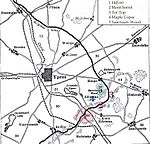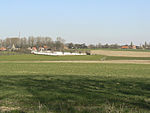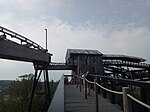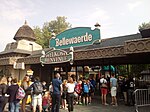Hill 62 Memorial
Canada in World War ICanadian military memorials and cemeteriesMilitary history of CanadaWorld War I memorials in BelgiumYpres Salient

The Canadian Hill 62 (Sanctuary Wood) Memorial is a war memorial that commemorates the actions of the Canadian Corps in defending the southern stretches of the Ypres Salient between April and August 1916 including actions in battle at the St Eloi Craters, Hill 62, Mount Sorrel and Sanctuary Wood. These battles marked the first occasion in which Canadian divisions engaged in planned offensive operations during World War I. In those actions the Canadians reconquered vital high-ground positions that denied the Germans a commanding view of the town of Ypres itself.
Excerpt from the Wikipedia article Hill 62 Memorial (License: CC BY-SA 3.0, Authors, Images).Hill 62 Memorial
Geographical coordinates (GPS) Address Nearby Places Show on map
Geographical coordinates (GPS)
| Latitude | Longitude |
|---|---|
| N 50.834722222222 ° | E 2.9466666666667 ° |
Address
8902
West Flanders, Belgium
Open on Google Maps










